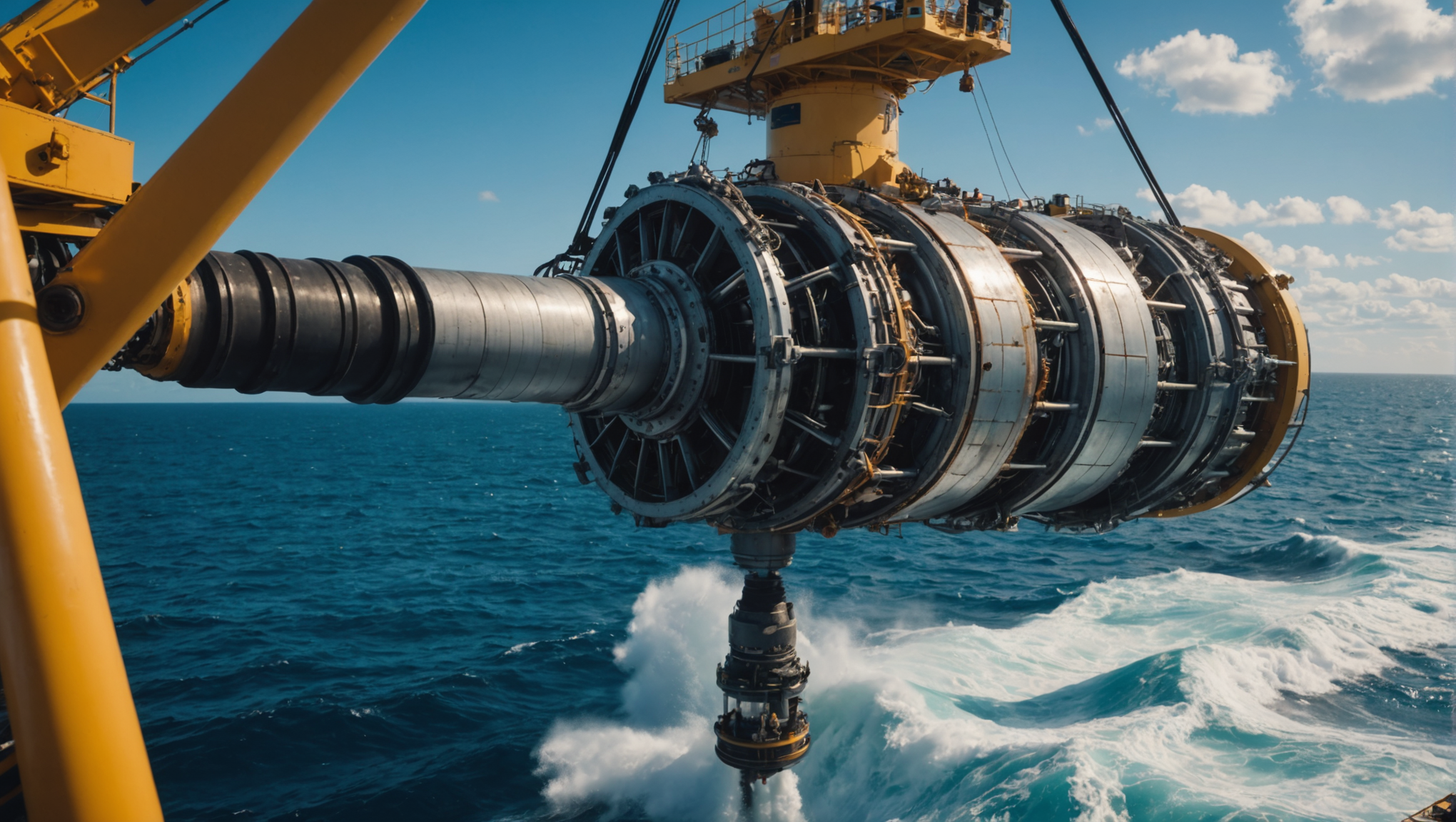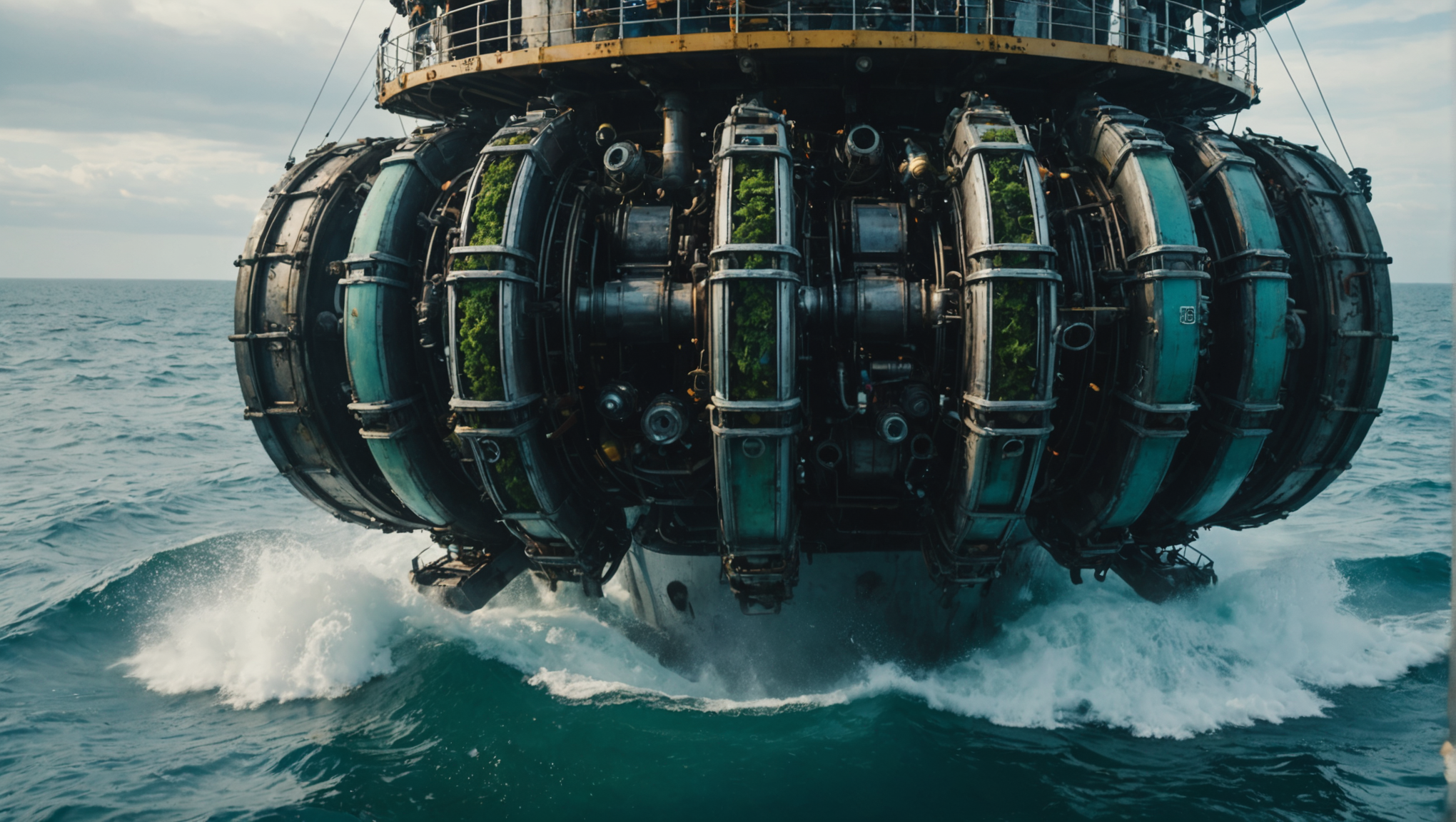From Ocean Depths to Cosmic Heights

Monster booster recovery details
In a stunning display of ingenuity and daring, SpaceX has recently achieved a monumental milestone in rocket recovery by successfully retrieving components of Booster 11 from the depths of the ocean. This ambitious endeavor was made possible with the help of the Hornbeck Orbital Offshore Services vessel, aptly named Ridgewind. A 240-foot behemoth designed for heavy lifting, Ridgewind executed the intricate task of raising these vital rocket parts from the seafloor, showcasing SpaceX’s relentless pursuit of reusability and efficiency in space missions.
The operation marked the first instance of Raptor engines—the very engines that will power SpaceX’s Starship rocket—being recovered from the ocean floor. Although the engines were encrusted with a layer of silt and other aquatic debris, their retrieval signifies a profound leap in understanding how these components perform and degrade after a flight and subsequent immersion in salty seawater. This knowledge is important for the team at SpaceX as they continue to refine their technology and ultimately aim for sustainable space travel.
What makes this recovery particularly noteworthy is the potential for engineering insights gleaned from the recovered pieces. Analysts and engineers have already begun their investigations, sifting through the debris for clues about structural integrity, performance characteristics, and any signs of stress or failure that may have occurred during the rocket’s brief stay in space. This kind of detailed post-mission analysis is integral to the iterative design process at SpaceX, allowing engineers to push the boundaries of rocket technology with each successive flight.
Furthermore, the recovery operation comes at a time when SpaceX is preparing for its next major mission. The company is reportedly close to launching the next flight test of Starship, and as always, the stakes are high. Engineers have been fine-tuning the launch tower mechanisms that will aid in catching the rocket post-launch. The recent modifications have been described as intricate and subtle, addressing parameters that could ensure a successful landing on the robotic arms designed for this purpose.
However, the road to future launches is not without its complications. SpaceX has been facing delays due to regulatory hurdles with the FAA, which affect not just their launch schedules but also their extensive recovery operations. The FAA’s scrutiny has been stiffened by environmental concerns following litigation regarding SpaceX’s activities in Boca Chica, Texas. The considerable time allocations devoted to ensuring compliance reflect the balancing act the aerospace community must constantly perform—advancing technological capabilities while honoring legal and environmental responsibilities.
Despite these challenges, the success of this ocean recovery has breathed new life into SpaceX’s efforts, making it clear that the future of space exploration may very well rely not only on launching rockets but also on effective retrieval and recycling of rocket parts. As we look ahead to upcoming launches and tests, it’s significant to recognize that every piece of recovered data and technology builds toward a vision where the logistics of launching into space become infinitely more economical and sustainable.

Recent launches and milestones
The realm of space exploration has seen extraordinary events this month, with a multitude of impressive launches that showcase the remarkable advancements occurring in the field. September has become a bustling month for space missions, beginning with the launch of Polaris Dawn on September 10th. Spearheaded by Jared Isaacman, this ambitious mission intended to take crew members to the upper reaches of the atmosphere aimed to expand the boundaries of human spaceflight. Over the span of five days, the crew not only orbited the Earth but also engaged in pioneering experiments—a testament to how private enterprises are blending with traditional space agencies to push exploration further.
The month continued to register significant milestones as on September 11th, a Soyuz rocket lifted off to ferry three astronauts—Alexander Gerst, Ivan Vagner, and veteran Don Pettit—to the International Space Station, cementing a new world record by placing 19 individuals in orbit at once. This achievement speaks volumes about the increasing international cooperation and the burgeoning role of private industry in managing space traffic. The sheer number of occupants in the cramped confines of the ISS reiterates the necessity of spacecraft capable of carrying larger crews, and hints at potential future projects aimed at expanding human presence in low Earth orbit (LEO).
Equally thrilling was the Falcon 9 launch on September 12th, which saw the deployment of the first five production satellites for AST SpaceMobile. Targeting direct-to-smartphone broadband connectivity, these satellites represent a groundbreaking shift in how we ponder about telecommunications—bridging the gap for those living in remote areas where conventional infrastructure fails. Notably, the satellites require an impressive 10-meter-wide antenna, a considerable engineering feat designed for optimum communication capability. Yet, as ambitious as this endeavor may seem, it brings forth important discussions about the implications of enhanced connectivity on societal structures, equity in technology access, and space congestion.
SpaceX’s reliability was on full display again as it launched the Galileo FM 26 satellites into medium Earth orbit on September 17th. This venture marked once again the collaboration between SpaceX and the European Space Agency, further underscoring the global nature of space exploration. In this case, the need for precise navigation capabilities highlights how nations depend not just on their own resources, but also on multi-national cooperative frameworks for maintaining and advancing satellite constellations.
The challenges of space are not limited to rocket launches; they extend to technological innovation and operational reliability. The recent successful launches came in juxtaposition with setbacks faced by other players in the field, including Deep Blue Aerospace and their suborbital flight that concluded with an unexpected landing failure. Such events serve as stark reminders of the inherent risks in aerospace testing, where technological advances demand not only enthusiasm but a rigorous approach to failure analysis and learning. Deep Blue has taken the opportunity to share imagery and data from the mishap—an admirable transparency that reflects a growing culture of information sharing within the industry.
On the military side, developments have also drawn attention. The testing of intercontinental ballistic missiles (IBMs) by China during this period raises potential geopolitical tensions, demonstrating how space technology often intertwines with national security measures. Similarly, the fallout from Russia’s recent missile tests, albeit disastrous, will likely prompt heightened vigilance on the global stage regarding missile developments and their implications concerning international treaties.
The latest wave of launches encapsulates not just thrust and velocity but also innovation, collaboration, and the promise of what’s to come. Each successful mission contributes to a deeper understanding and deliberate progression towards sustainable human activity in space. The landscape of deep space exploration is being shaped not merely by the engineering prowess of rockets but also by the visionary foresight of multinational cooperation, innovative communications systems, and strategic considerations for future endeavors. As we continue to monitor these advancements, the next steps will undoubtedly lean heavily on the experiences and lessons learned from this month’s achievements and setbacks alike. The space economy is set to expand, and as various entities join the expedition, the journey beyond our home planet will become increasingly accessible, collaborative, and replete with opportunities.
Challenges and future missions
The journey ahead for space exploration is rife with both challenges and opportunities that could redefine our understanding of what it means to venture beyond our planet. SpaceX, along with its myriad partners, is setting the stage for a future where the stars may not be so far away after all, but the path toward that future is anything but simpler. With the recent successes and recoveries, there’s an unmistakable excitement building, yet it’s accompanied by significant hurdles, both technical and regulatory.
As SpaceX gears up for the next flight test of its star-launching behemoth, the potential to catch and reuse rockets in real-time is not just a marketing strategy, but an imperative for sustainable exploration. The iterations that engineers are implementing to the launch tower and recovery arms are emblematic of the kind of forward-thinking necessary to maintain momentum in the current pace of space exploration. This ambition is not just about making history—it’s about establishing a viable economy in space, one where each launch drive costs less and contributes to a working cycle of lunar, Martian, and beyond exploration.
However, the stakes are high. A recent regulatory landscape shift requires that SpaceX remains in strict compliance with longer evaluation processes from the FAA, as they navigate the complex interplay of innovation and environmental stewardship. These delays pose a significant challenge as SpaceX is bound by existing agreements and concerns raised by environmental groups regarding operations at their launch site in Boca Chica. Every launch or modification to an existing protocol invites scrutiny and potential appeals, which can hinder operational plans and schedules. This has prompted criticisms about the FAA’s capacity to handle the growing number of commercial launches as they sort through the applications on hand while managing their responsibilities to protect natural resources.
Meanwhile, international players are making their presence felt in this evolving landscape. The ongoing developments in China, from multiple satellite launches aimed at bolstering their global positioning system to testing new space technologies such as the agile dragon rocket, signal a growth in competition that could affect the global paradigm. These actions emphasize a need for the U.S. and other nations to reassess their strategies in space. With emerging capabilities fostering a competitive spirit—the space race is not just a relic of the Cold War, but very much a modern-day endeavor driven by national pride, economic potential, and technological advancement.
Moreover, the recent surge in satellite internet deployment, particularly through ambitious projects like that of AST SpaceMobile aiming for direct-to-smartphone connections, represents a paradigm shift in global communication accessibility. Bridging gaps in connectivity may seem like a secondary challenge, but it’s intertwined with the capabilities needed for resilient terrestrial operations in remote areas, which are essential for disaster response and equitable technological access worldwide. Such advancements bring forth nuanced implications about space utilization and orbital sustainability, pressing the urgent need to consider the long-term effects of increased satellite traffic on our shared orbital environment.
As commercial enterprises capitalizing on space tourism and exploration line up alongside government initiatives, how stakeholders engage with these developments will determine trajectory and strategy in the coming decade. Companies like Blue Origin and SpaceX are not just competing for flight time, but also for the economic viability that comes with establishing early dominance in the nascent lunar and Martian economy. Their paths will not only shape manned missions to other worlds but will also define the framework for mining operations, scientific research installations, and long-term human habitability away from Earth.
The ultimate mission stretches beyond mere launches and celestial navigation; it encompasses our understanding of sustainable human life in the cosmos. Each technical hiccup, and each spectacular success serves as a data point, an integral lesson that composite into the intricacies of future endeavors. Grounded in this ethos, the forthcoming missions are set to push the envelop of possibility in ways we’re only beginning to grasp. As all these machinations unfold—allowing humankind to stretch the boundaries of existence—a collaborative spirit intertwined with competitive drive defines the narrative of this latest age of exploration. Through challenges, innovation continues to lead the way, and the sky, indeed, is no longer the limit.